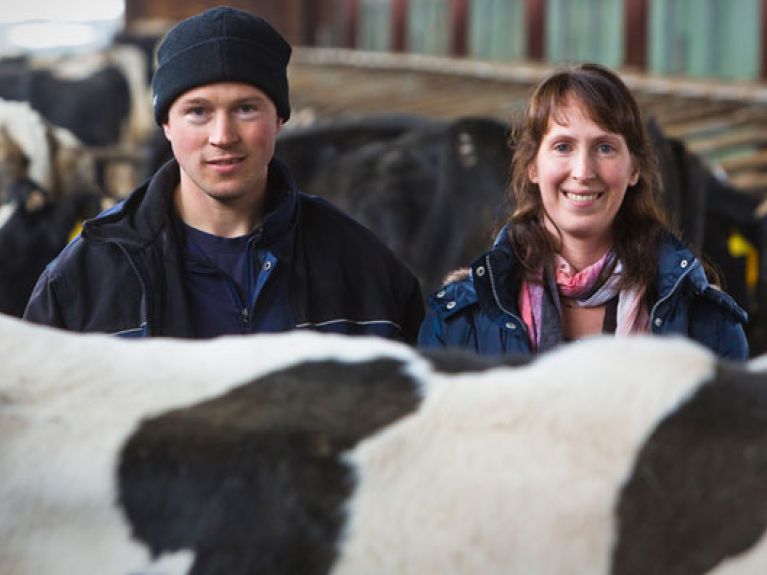Where cows deliver energy
A small place in Mecklenburg-Western Pomerania shows how it’s done: the Bioenergy Village Bollewick produces more electricity and heat from renewable sources than it consumes.

The idyllic village of Bollewick lies about 120 kilometres north of Berlin. At first glance it seems utterly dreamy and charming. But when you take a closer look, it becomes clear that people here are actively involved in boosting the energy turnaround. The 670 members of the community in Mecklenburg-Western Pomerania live in a bioenergy village, a place that is opting for naturally produced energy and sustainable technologies. Consequently, the 450 cows belonging to farmer Henk van der Ham, who originates from the Netherlands, are a source not only of milk and meat but also of energy, because their manure provides the material for a biogas plant that produces electricity and heat.
Gas is produced in biogas stations from fermented biomass, such as liquid manure, farmyard manure and plants. This gas is then transformed into electricity in a combined heat and power unit. The resulting residual heat can be used for heating purposes. Unlike wind and solar power plants, biogas plants can produce energy continuously, which makes them a real alternative to nuclear and coal-fired power plants.
Bioenergy for 2,800 households
But of course, this clean and reliable energy still requires infrastructure investment. In Bollewick this included the construction of heat transfer stations and the laying of some three kilometres of pipelines to connect the households with the two biogas stations. Excess electricity is fed into the public grid. And there is plenty of it. Meanwhile, the sustainable bioenergy is supplying more than 2,800 households, and 54 families in Bollewick are heating their homes with the residual heat from the two biogas plants. The turnaround is definitely benefitting householders whose heating costs have decreased by one third. And so far energy conservation in the village has been excellent: at least 70 per cent of the required heating comes from the cowshed, so to speak. At the same time there is an annual saving of 250,000 litres of oil and gas, including 50,000 litres for the huge fieldstone barn which is a cultural centre.
The barn is a great attraction in two respects: on the one hand, the 130-year-old building is Germany’s largest fieldstone barn. It is made from a combination of fieldstone and redbrick and is used for a variety of purposes. On the other hand, the 1,000 square metres of solar panels on the barn’s roof provide electricity which also happens to power the office of the mayor, Berthold Meyer. Mr Meyer, a native of Bollewick, has been a key figure in the development of the bioenergy village. It is now the sixth community in Mecklenburg-Western Pomerania that has managed to gain this title.
Economical street lights
Bollewick is steadily pursuing its chosen path. The energy-guzzling 80-watt bulbs in the street lights have been replaced with 20-watt LED bulbs. Mayor Meyer says this alone saves about 7,000 euros on electricity each year. At the moment, four municipally owned residential blocks are being connected to a third biogas plant at a farm. In addition, the people of Bollewick are considering the possible benefits of attracting energy intensive businesses that would use the excess residual heat from the biogas plants in the summer. Bollewick is working together with seven neighbouring communities to develop a concept for the use of wood waste. Berthold Meyer envisages a central depot where tree and grass cuttings can be dried and made into wood pellets or wood chips for private heating systems. Ideas for the future are flourishing in the countryside.
© .de - Deutschland.de, www.deutschland.de